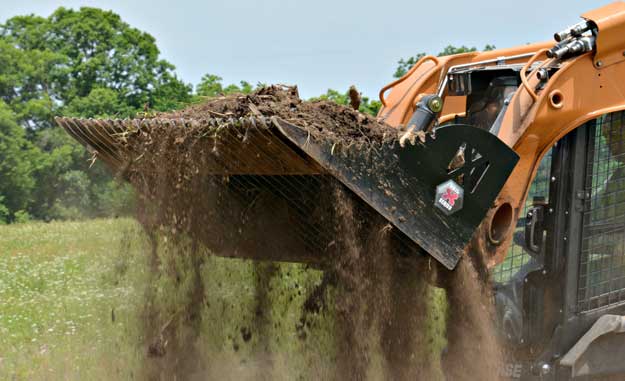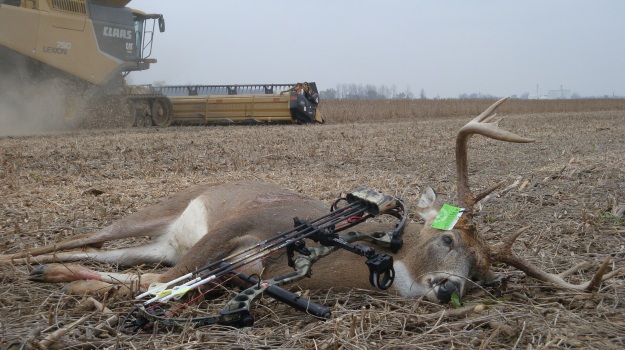
A common problem many guys have to work around in their food plots and wildlife openings is rocks. Having to cultivate soil that is heavily littered with rocks can cause multiple problems when it comes to managing a food plot. Besides it being outright difficult to create a good seed bed in rocky soil, the rocks can be really hard on equipment causing pre-mature wear and break downs. The folks at Vail Equipment have an incredible attachment for a skid steer or track loaders called the X Series Rock Bucket. Featuring a rugged, high strength skeletal design and a low profile, the Vail Products X Series Rock Bucket is the ideal attachment to effectively remove and separate unwanted rocks, roots, brush, or other trash from your plots. After removing the majority of the rocks from the top 8-10 inches of the soil profile, discing or tilling the field will be much less stressful on equipment as well as being more consistent and uniform for the best seed germination. Removing rocks will also prove to be beneficial for fields where you want to manage a perennial like clover, chicory, or alfalfa, all plants that need to be mowed occasionally. The removal of the rocks with the X Series Rock Bucket will make mowing these perennials much more consistent and easier on your bush hog or mower.
This tip is courtesy of the GameKeepers Field Notes, a weekly wildlife and land management email newsletter produced by the Mossy Oak GameKeepers.
A GameKeeper by definition is someone who truly loves AND lives the land, the critters and nature…not just during hunting season but all the time. A GameKeeper wants to be outdoors every day and work the dirt while living their personal “obsession”.
Find out more about what makes a GameKeeper by visiting our website.





























